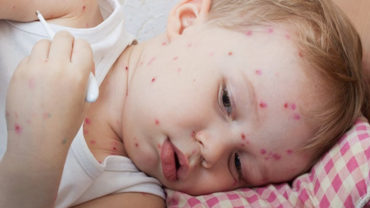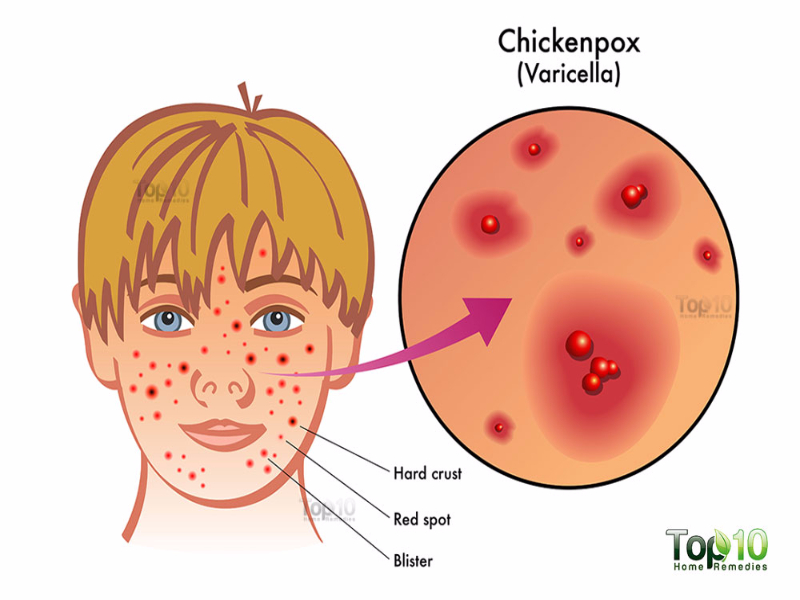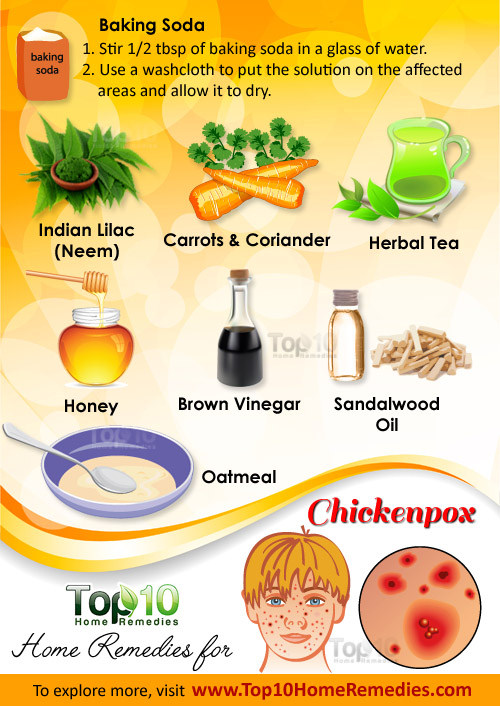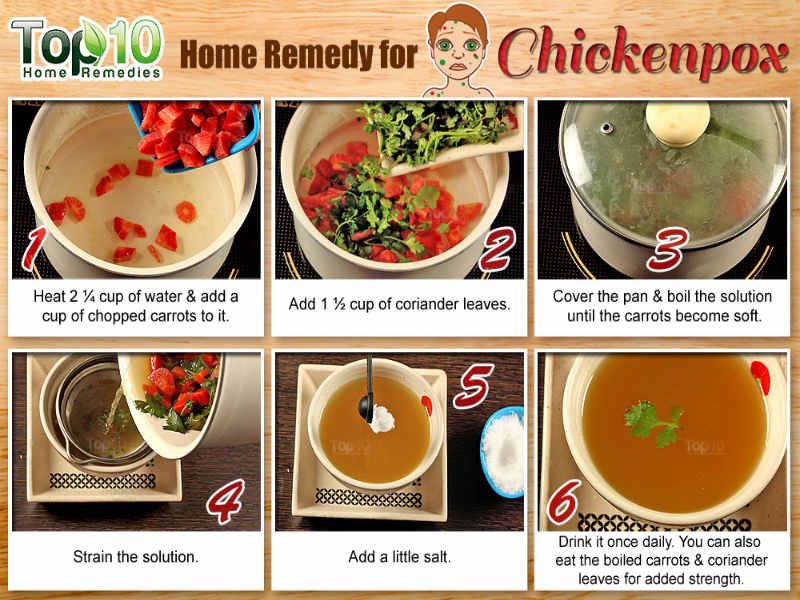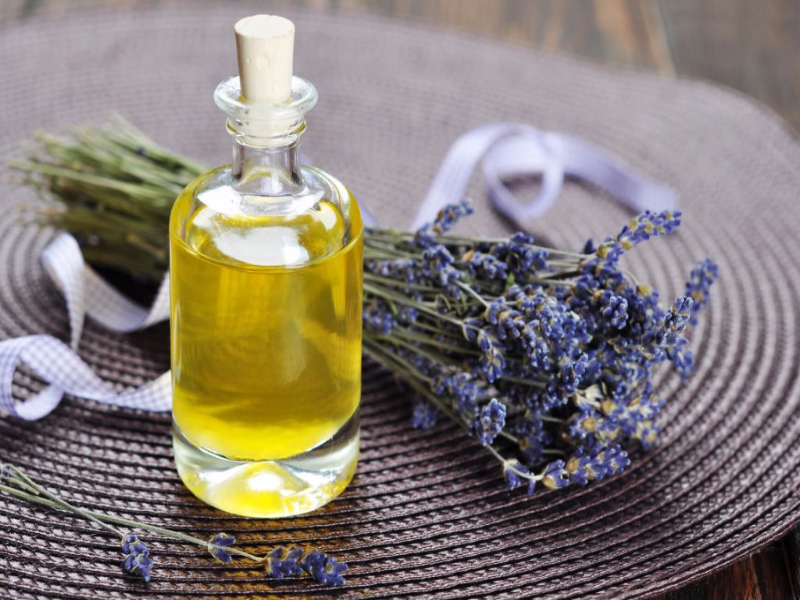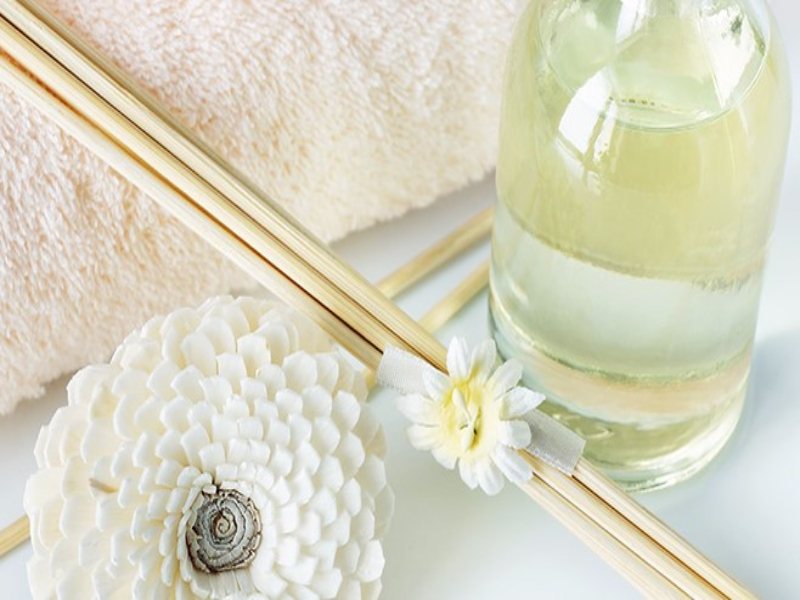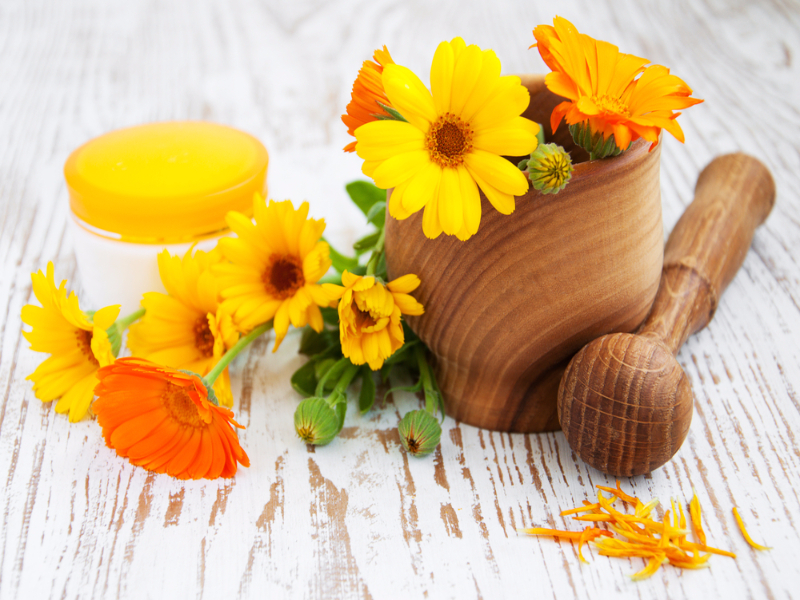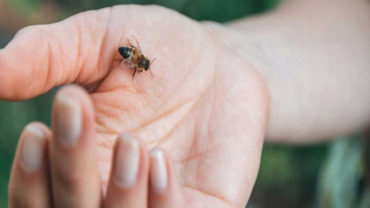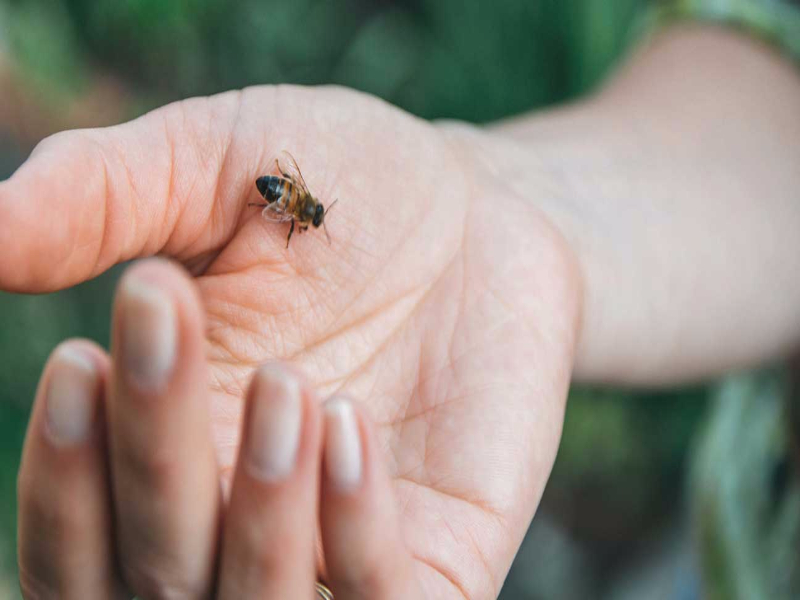Via Top 10 Home Remedies: Home Remedies for Chickenpox
Chickenpox is caused by the virus known as varicella-zoster and spreads easily from one person to another.
This disease can spread through air or contact with saliva, mucus, or fluid from blisters of an infected individual. The infected person is contagious from a day or two before the rashes appear, until the time when all the blisters have dried.
It usually takes 10-21 days for the symptoms to develop the symptoms after being exposed to the virus. The most common symptoms are an itchy rash and red spots or blisters all over the body.
Other symptoms include fever, fatigue, loss of appetite, and aching muscles. Because most people get vaccinated against chickenpox, it is most common among newborn babies, followed by pregnant women and people with weak immune systems.
Usually, the worst symptoms of chickenpox subside in about two weeks. However, you can try some natural remedies to alleviate some of the symptoms and get relief from itching as the virus takes its course.
Here are the top 10 home remedies for chickenpox.
1. Baking Soda
Baking soda can help control the itchiness and irritation from chickenpox.
2. Indian Lilac
Indian lilac, also known as margosa or neem is useful in the treatment of chicken pox as it has antiviral properties. Furthermore, it helps dry out the blisters and relieves itching to a great extent.
Take a handful of neem leaves, crush them and apply the paste on the affected areas. Adding neem leaves in bath water is also beneficial.
3. Carrots and Coriander
A soup made of carrots and coriander is highly beneficial in the treatment of chickenpox. It is rich in antioxidants that help in the healing process.
- Cut up 100 grams of carrots to get about a cup of chopped carrots and chop 60 grams or one and one- half cup of fresh coriander leaves and boil them in about two and one-quarter cup of water until half the amount of water evaporates.
- Drink the soup once a day for about a month. You can also eat the boiled carrots and coriander leaves for added strength.
4. Oatmeal
An oatmeal bath is a popular home remedy for itchiness caused by chickenpox.
- Grind two cups of oatmeal into a fine powder.
- Put the powdered oatmeal in two liters (one-half gallon) of lukewarm water.
- Soak in the bathwater for 15 to 20 minutes.
5. Brown Vinegar
One of the most effective remedies for treating chicken pox is brown vinegar. It will relieve skin irritation and help heal the lesions and prevent scarring.
Simply add one-half cup of brown vinegar to lukewarm bathwater, and soak in the bath for about 10 to 15 minutes.
6. Honey
Honey will provide relief from itchiness and help heal the blisters caused by chickenpox.
- Get a good quality, pure honey and coat the affected area with it.
- Repeat the process two to three times a day until the scars are gone.
7. Herbal Tea
You can also try mild and sedative herbal tea made from herbs such as chamomile, holy basil, marigold and lemon balm.
- Put one tablespoon of any of these herbs in a cup of boiling water. Let it steep for a few minutes and then strain it.
- Add a little cinnamon, honey and lemon juice and sip the tea slowly.
- Drink this herbal tea a few times a day for best results.
8. Lavender Oil
Lavender oil is another effective remedy to reduce skin irritation and itching caused by chickenpox.
- Dilute a little lavender essential oil with carrier oil like almond oil or coconut oil and apply it on the affected areas and leave it on until it dries. Repeat twice daily.
- Another option is to add a few drops each of lavender and chamomile essential oils in lukewarm water and soak in this bath for about 10 minutes.
9. Sandalwood Oil
Sandalwood oil can be beneficial in the treatment of chickenpox sore due to its antiseptic and anti-inflammatory properties. It will also help fade chickenpox scars.
Simply add a few drops of pure sandalwood oil to a teaspoon of a carrier oil like almond oil and apply on the rashes. Do this regularly until all the sores and scars heal completely.
10. Calendula Flowers
Calendula, also known as marigold flowers can also be used to relieve the itching caused by chickenpox.
- Put two tablespoons of calendula flowers and one teaspoon of witch hazel leaves in a cup of water and let it sit overnight.
- In the morning, grind the mixture thoroughly.
- Apply the paste directly on the rashes.
- Rinse it off when it dries completely.
Additional Tips
- During early stages of this disease, include figs in your diet.
- Drink fresh fruit and vegetable juices.
- Eat more vitamin C rich foods.
- To reduce the appearance of scars, apply vitamin E oil on the affected areas when they start healing.
- Avoid scratching the sores as it can cause slow healing and increase the risk of bacterial infection. If your child just can’t stop scratching then trim your child’s fingernails short to reduce the risk of infection.
- As prevention is always the best cure, make sure you get your child vaccinated for chicken pox.
Chickenpox is usually a mild illness that improves with time. But if you or your child become seriously ill with chickenpox, consult a doctor.


